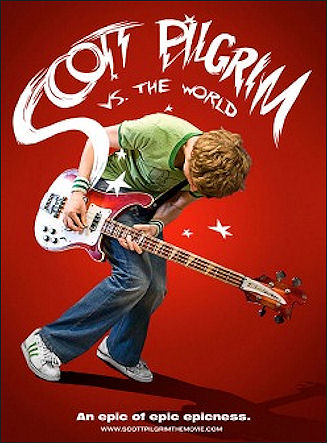A friend has read an early draft of Terrence Malick‘s Tree of Life script “and here’s what I can tell you, other than that it’s wonderful,” he writes. “Of course, there is a very good chance that the finished film will look nothing like this, given Malick’s track record. But it really does appear to have borrowed not just a page, but several whole chapters from 2001: A Space Odyssey‘s book.
“The bulk of the script takes place in the 50s, as has been reported. The protagonist is Jack, the oldest of three brothers in a Texas family with more than a passing resemblance to the Malick family itself, as he learns about the ways of the world. The film starts off with the death of one of the brothers, the family in despair, then settles on the grown Jack (Sean Penn), depressed, in the modern world.
“Then, it basically goes somewhat Koyaanisqatsi on us, showing the despair of our world, of urbanity, etc. The idea being that Jack’s despair is mirrored all around him, in man’s alienation from the infinite. Or as the script puts if, ‘The supreme misery…to find oneself abandoned to the busy dance of things which pass away.’
“All that, however, is basically prologue. As Jack searches for some kind of reconnection to the world, the film flashes back to the beginning of time. We see the creation of galaxies: ‘The growth of the cosmos, the great epic of evolution, from the Big Bang through the long ages of geological time, down to the present day,” it reads. The language here is absolutely beautiful — half philosophy, half science, all poetry — and we’ll see how it works in the film, how much of it actually winds up in there, how much time it takes.
“But the dinosaurs are a very small part of it in the script, like half a page. We see them appear, then we see them wiped out, then we see the mammals begin to emerge.
“And then, we see Jack’s childhood, his first discovery of the world, his connection to his parents, the arrival of his brothers, and their coming of age. The stuff with the family is wonderful, but it’s not very plot driven, small little moments built on small little moments. The kind of thing only Malick can pull off. This is the bulk of the script itself, 100 pages or so out of 126.
“The third part of the film flashes forward, and we see the death of the universe. This is again in the mode of those early scenes that showed us the creation of the galaxy and of human life. We see the Earth grow hotter and then die, basically. We see the galaxy die, but then we see new ones come about, and we see the visual manifestation of the Multiverse theory.
“Again, so much of this is conveyed through such powerful language that it’s hard not to come away from the script powerfully moved. The idea is not that the worries and cares of humans are smaller than a tiny speck of sand, but that we’re part of some vast process, that ‘the same power which burns in the stars and nebulae burns equally in us.”
“To what extent it will be realized on screen, and how much time it will probably take, remains to be seen.”






